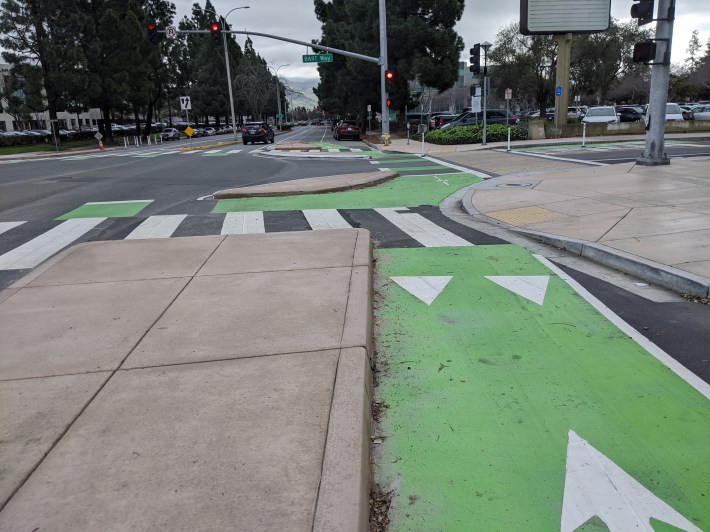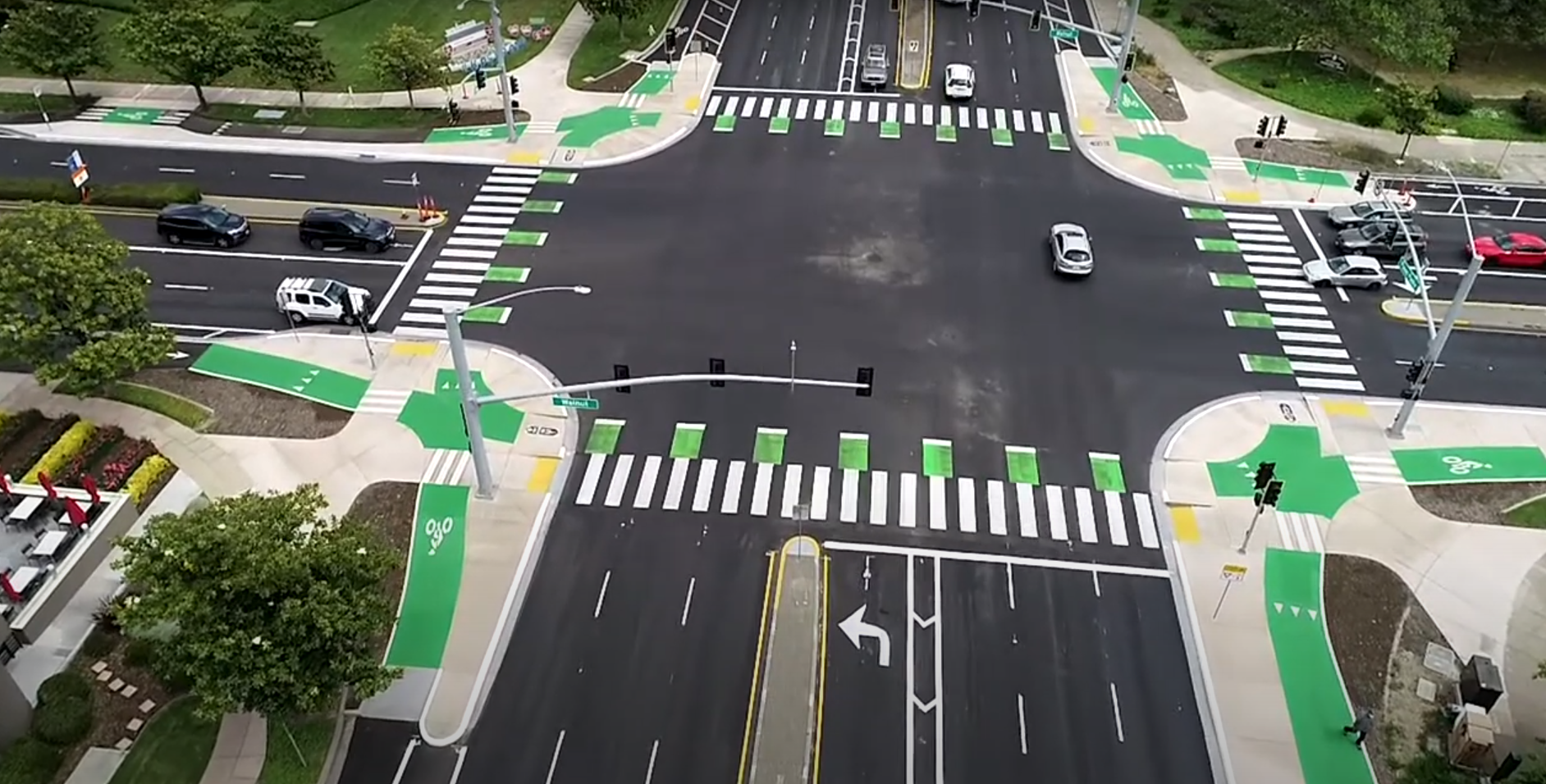Note: GJEL Accident Attorneys regularly sponsors coverage on Streetsblog San Francisco and Streetsblog California. Unless noted in the story, GJEL Accident Attorneys is not consulted for the content or editorial direction of the sponsored content.
If someone in the Bay Area wants to experience top-notch bicycle infrastructure in a suburban setting, they can get on a plane for twelve hours and visit the Netherlands. Or they can ride BART to Fremont.
The city of Fremont was to do a ribbon cutting in May of its 1.3 mile Walnut Avenue improvement project, which features sidewalk-level, fully separated bike lanes on both sides of the street, with protected intersections at major crossings. But COVID forced them to cancel the celebration, explained Matthew Bomberg, Senior Transportation Engineer for Fremont's public works department. That said, nearly all work is now complete, and the city produced a video, "Introducing the Walnut Bikeway." As it explains (see below), the Walnut project connects housing, shopping, and civic destinations with the Fremont BART station. It features interviews with Fremont officials and Bike East Bay's Susie Hufstader.
There's also a companion video aimed at motorists that explains how to navigate the intersections and driveways. As with all Dutch-style infrastructure, the intersections seem intuitive. This was clear in January, when it was still under construction. This Streetsblog post from back then features more details and drawings of the plans.
"We have gotten very positive reviews from a number of cyclists and have seen families out biking in the facility. As with any new facility, there is a learning curve that comes with a changed condition," Bomberg wrote in an email to Streetsblog.
"We did get some negative feedback from some motorists, though much of it was related to construction disruptions. The main issue we continue to work to resolve is motorists attempting to use the protected intersection as a right-turn slip lane; we have made some design tweaks to address this, and education is ongoing."
He added that some cyclist lamented that they feel they have to go slower, because of the nature of the bike lanes. But Bomberg said a small sacrifice in speed for hard-core cyclists is worth the safety for everyone else.
Planners in San Francisco, Oakland, and elsewhere often say that fully built-out protected bike lanes don't work with driveways, or that protected intersections must be fully signalized, or that it's infeasible to build them on both sides of the street, or they're just too expensive. Others say cycling can never work for riders of all ages and abilities in sprawling suburbs. Of course, these are all false statements, as the Dutch have proved.

And Fremont, with this project, has now proven that Dutch-style infrastructure fits just fine in suburban California. Bomberg told Streetsblog that these types of applications, adjusted for the geometries of specific streets, can work anywhere. "For this project, some of the design challenges included accommodating large vehicle turning clearance at protected intersections, meeting fire minimum-clear-width requirements for a corridor with high rise construction, how to treat the raised bikeway at driveways, and designing a raised bikeway and protected intersections that can be navigated by the blind. We were able to work with the relevant stakeholders to develop approaches to these challenges," he explained.
Fremont still has a lot of work to do. Turn off Walnut, and cyclists are, for the most part, back on dangerous, heavily trafficked streets with some nice paint but no real protection. 1.3 miles of great street upgrades do not a cycling paradise make.
Fortunately, the city is stepping up. "We have a number of projects to implement additional protected bike lanes, protected intersections, and transit access improvements in Fremont. A couple of highlights include converting 12.5 miles of buffered bike lanes to separated bike lanes in corridors citywide (project out to bid), installation of protected intersections at Fremont/Mowry and Fremont/Stevenson, and completion of the Warm Springs West Access Bridge (planned for this fall)," wrote Bomberg.





